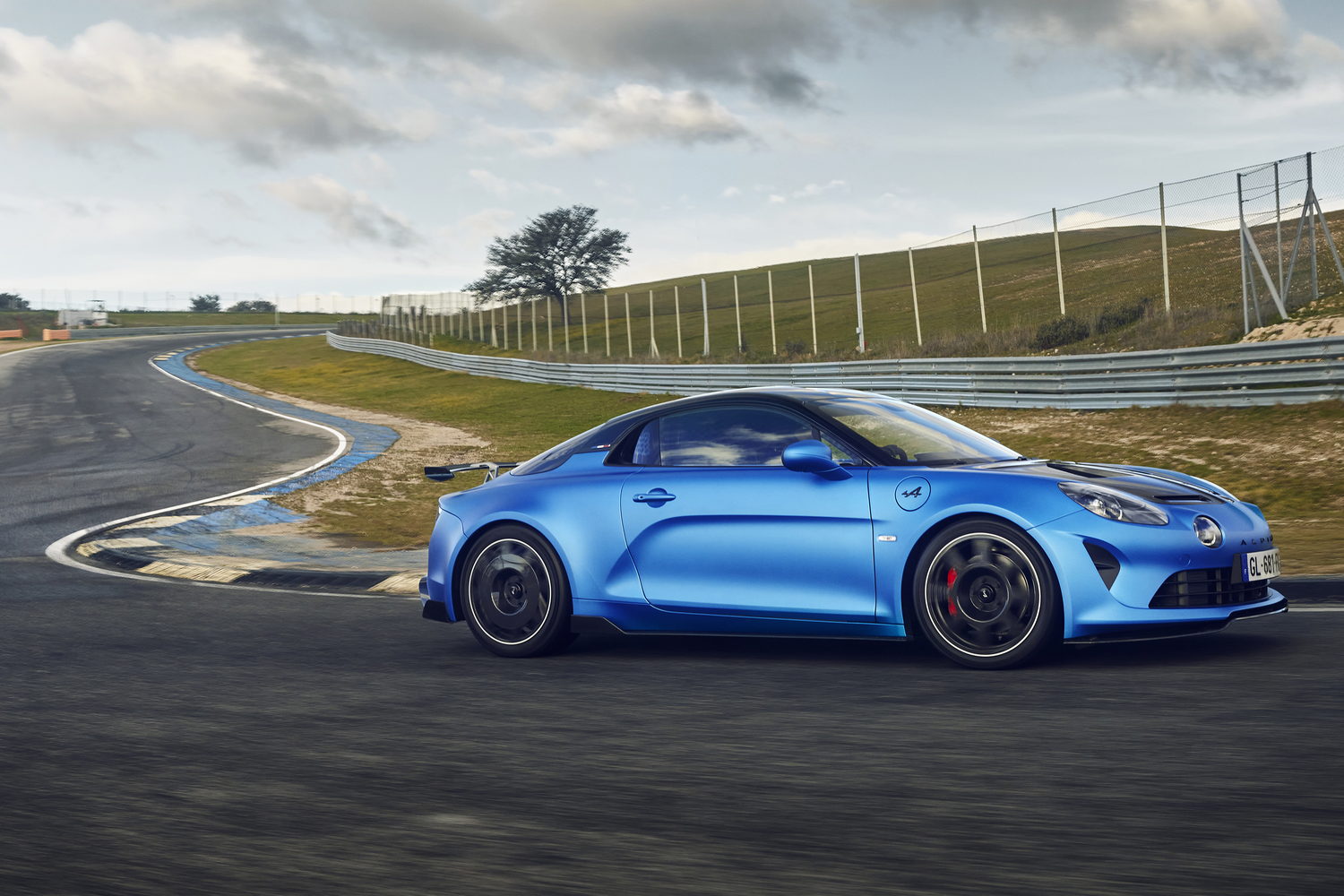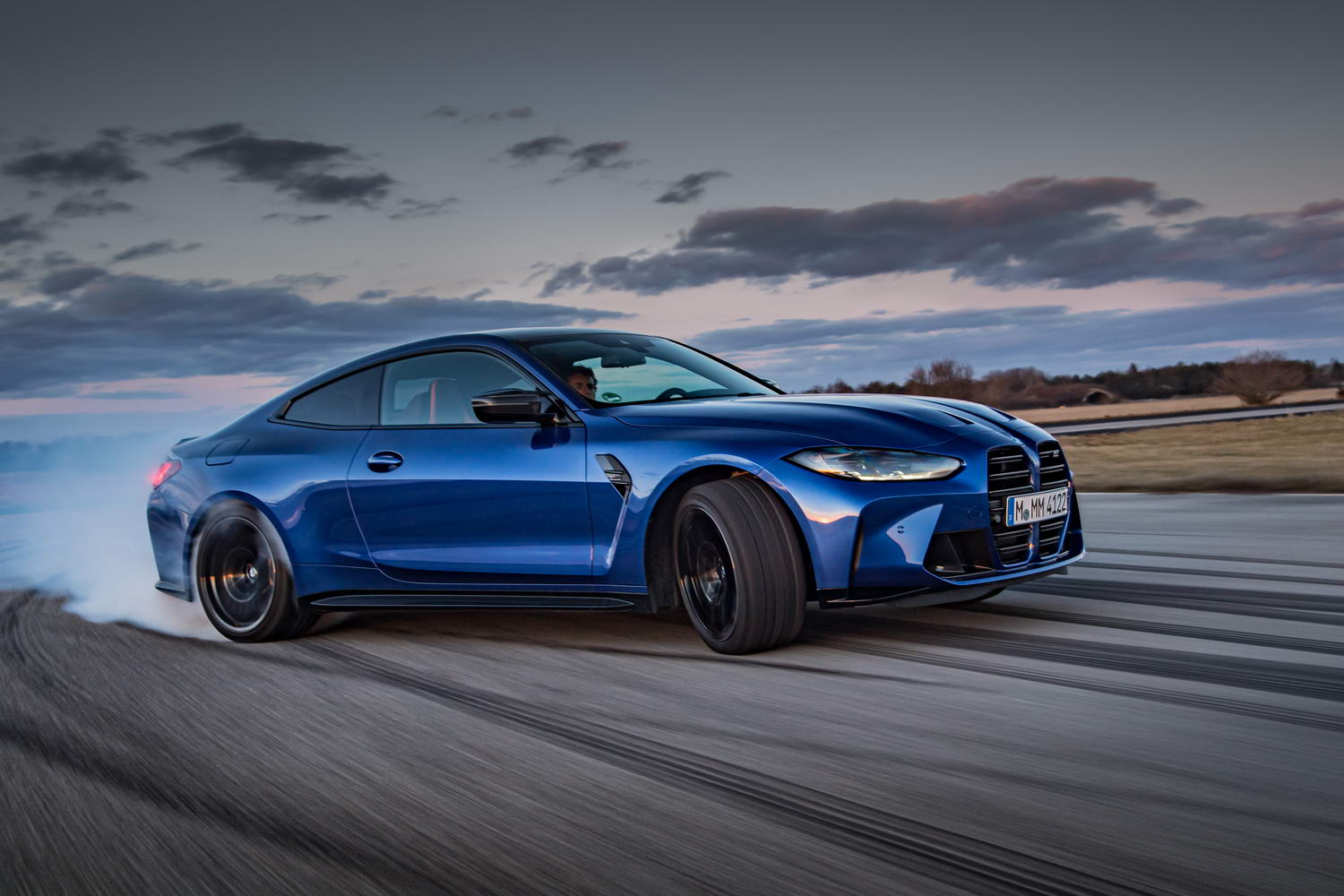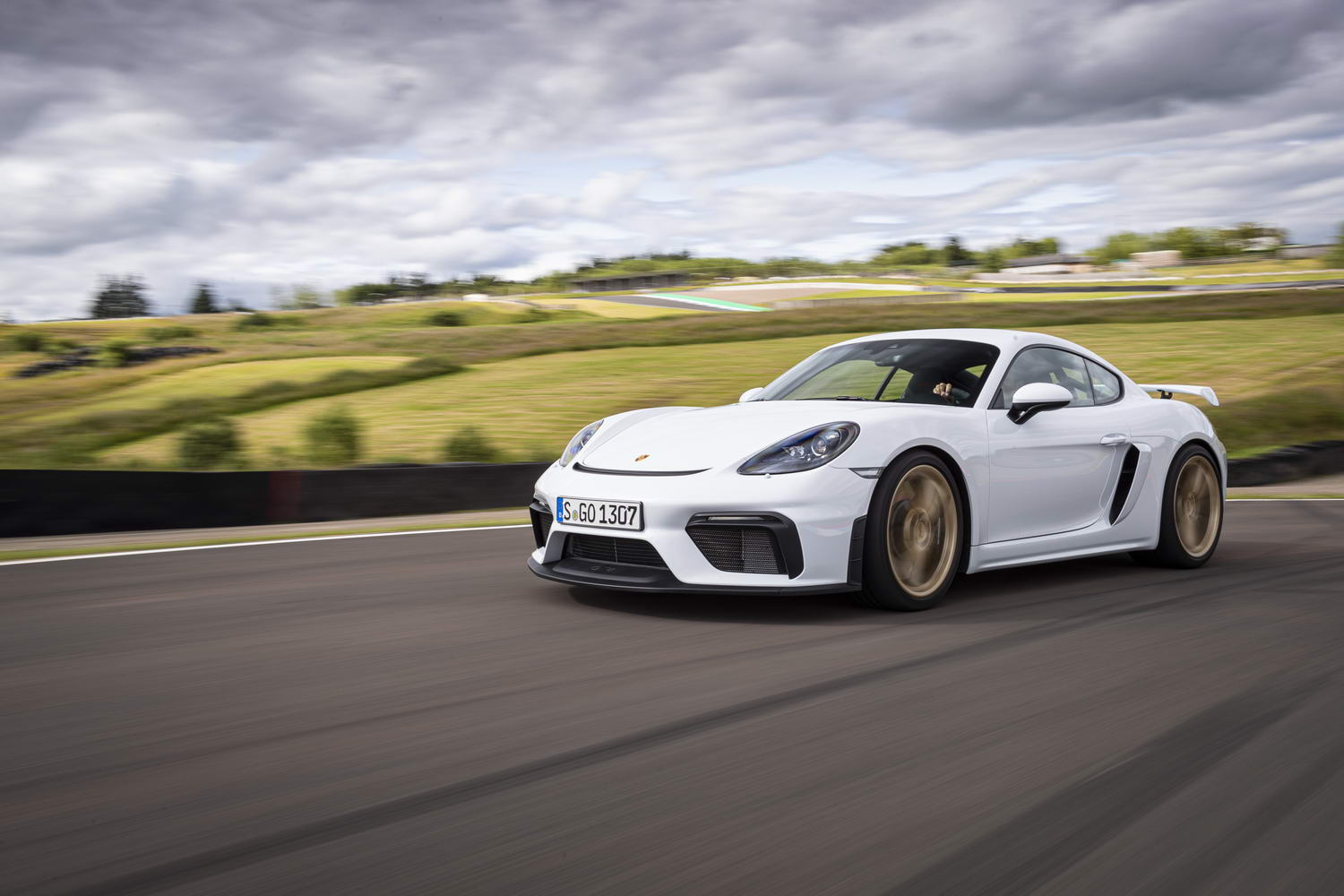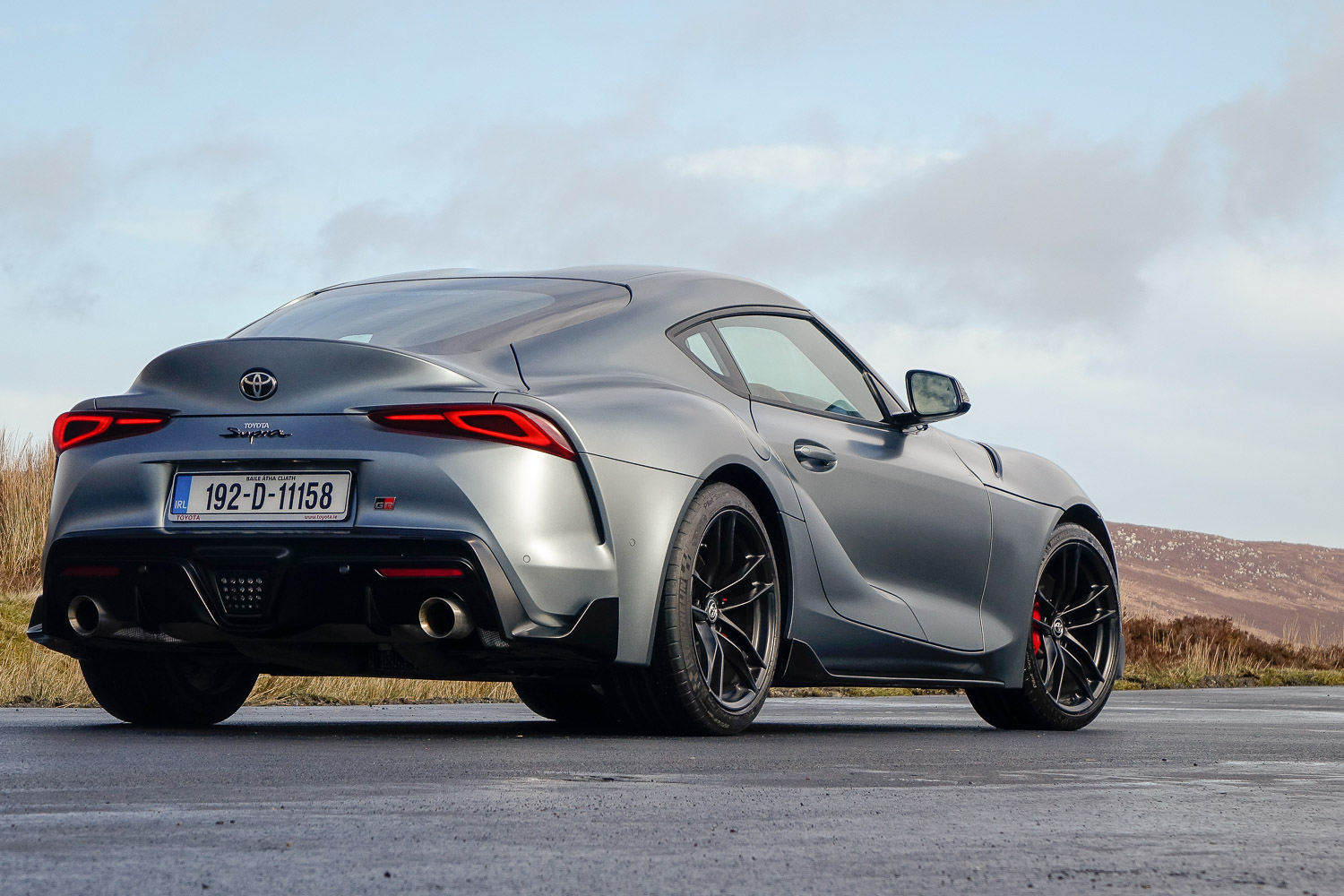Now that Alpine has been confirmed for launch into Ireland, its fabulous A110 coupe is of more interest than ever to Irish driving enthusiasts. And the new A110 R will top the line-up for those with deeper pockets and a desire to own the most capable example of the lightweight two-door. Based on the A110 S, development of the R was focused not on more power, but instead on enhancing the car's aerodynamic efficiency, making its chassis even better suited to use on a race circuit and paring even more weight from what is already the lightest car in the sector. We took to the road and track to try it out for size.
In the metal
You won't mistake the A110 R for any other model in the range, thanks mainly to its comprehensive carbon-fibre overhaul - and the fact that Alpine doesn't paint the new carbon parts to suit the rest of the car. The carbon-fibre bonnet is an obvious change, but more arresting again is the replacement of the rear window with a full carbon panel - yes, that means you can't see straight out the back.
At the rear, there's also a new carbon-fibre spoiler mounted on 'swan neck' support brackets to optimise its effectiveness, working in conjunction with a redesigned and wider carbon and fibreglass aerodynamic diffuser. Poking out the middle of that is a new exhaust outlet, 3D-printed in stainless steel with a double-wall design to protect the surrounding material from the high exhaust gas temperatures. Shame it isn't black to match the diffuser, but that's a tiny blot on an otherwise extremely eye-catching car.
There are protruding carbon-fibre side sills, too, and a new carbon splitter up front complemented by carbon air vents. Last, but certainly not least, are the very special carbon-fibre wheels. The front and rear wheels get unique carbon fronts, too, giving the A110 R an appealingly functional appearance - those up front are shaped to channel cooling air to the brakes, while the rear wheel covers are flatter and more closed in the name of reduced drag. The wheels alone account for 12.5kg of the overall weight reduction, claimed to be 34kg.
Inside, it's clear where some of the other savings have come, though Alpine resisted stripping the A110 bare of equipment, so it still has air conditioning and navigation, for example. There was a weight reduction thanks to the removal of the rear glass of course, but the most obvious change is the use of a gorgeous new set of carbon-fibre backed bucket seats made by Sabelt with integrated harnesses. The driver's can be adjusted, but the passenger's cannot. Regardless, we found them comfortable after a few hours in the car, so they don't appear to be a compromise on that front, though the harnesses are a bit fiddlier than conventional seatbelts.
Elsewhere in the cabin you'll spot red door pulls instead of the conventional items, while the flat-bottomed steering wheel is trimmed in grey microfibre with a red 12 o'clock marker. Black microfibre is used throughout the rest of the interior, with a splash of colour provided by the French tricolour and a section of the door picked out in the same hue as the exterior paint.
On the subject of which, our test car was finished in the most expensive paint option, simply called Matt racing blue. It's borrowed from Alpine's F1 team and it looks stunning.
Driving it
Though the A110 is a low car, it's not difficult to get into. With a helmet on for track use, you of course have to be aware of ducking your head further, but the two-seat coupe was designed from day one to accommodate drivers wearing helmets, and there's plenty of headroom to allow for that once you're in. The R compromises on rear visibility because of the lack of a rear window, but you soon adapt your driving and mirror checking to compensate.
Our test drive started with a quick-moving motorway and main roads, not all perfectly surfaced. Immediately it's clear that the A110 R isn't the hardcore track-only toy that its looks and focus might have you believe it to be. It moves with the road as only a lightweight car can, as Alpine's chassis engineers didn't need to make it overly firm to achieve the body control they were seeking.
That may come as a surprise given the R's extensive chassis changes. It rides 10mm lower for a start - to the benefit of the aesthetics, the centre of gravity and the aerodynamics. It's possible to lower it a further 10mm "for track use only" using the appropriate tools. Then, the springs front and rear were stiffened, as were the front and rear anti-roll bars. To all this, Alpine added new dampers with manual adjustment - through 20 discrete levels. The changes have been designed around making the most of the special Michelin Pilot Cup 2 semi-slick tyres that are fitted as standard.
These tyres might be a handful on a wet and windy Irish road, but on the dry Spanish tarmac of our test route, they were sensational. Once off the motorway onto more interesting mountain roads, we were able to put the chassis upgrades to the test and while the core personality of the standard A110 hasn't been lost, there's just more of everything - more feedback, more grip, more control, even more noise. It's a thrilling car to drive, engaging the driver like few others as it blasts from corner to corner, allowing you relish every moment.
Some will be surprised that Alpine didn't touch the powertrain of the A110 S for use in the R. It's the same turbocharged 1.8-litre, four-cylinder petrol engine here, bolted to a seven-speed, dual-clutch automatic gearbox. Peak outputs of 300hp and 340Nm remain and even the transmission's gear ratios are unchanged. Nonetheless, the reduced weight has allowed the R accelerate faster than its siblings, so 0-100km/h is dispatched in just 3.9 seconds.
Many will lament the lack of a manual gearbox option in a car such as this, but the dual-clutch auto isn't bad at all. It can operate in smooth, fully-automatic guise when you want it to, though it feels more natural to control it via the metal gearchange paddles behind the steering wheel. The ferocity of those changes depends on which driving mode you've selected. Move from the default Normal setting to Sport and the gearchanges are more pronounced, adding to the occasion, while response to the accelerator is enhanced and there's an evocative popping and banging from the exhaust every time you ease your foot off the gas.
To safely test the A110 R's capability, we were allowed flat-out laps of the Jarama race circuit outside Madrid in Spain. Holding down the Sport button summons up the Track driving mode, with even quicker gearchanges - and no intervention from the transmission, so you can hold the car at the rev limiter if you wish. This Track setting also slackens off the stability control a little, allowing more slip at the back of the car before it intervenes. It's very well judged, allowing you to carry speed out of corners with a satisfying whiff of oversteer (the rear tyres slipping), but providing an electronic safety net when needed. It is of course possible to switch off the stability and traction control systems completely.
And while that might be fun to dabble in a little tyre-smoking drifting, the A110 R is at its heart a more precise car than that. It rewards smooth lines, along with decisive braking and accelerator inputs. Saying all that, and despite its undoubted extra capability (it must be considerably faster per lap than the other A110 models, something we didn't have the opportunity to test for ourselves), the R remains a car that involves its driver in the process with telepathic response to the perfectly-weighted steering for a start, ludicrous front-end grip and plenty of feedback through the steering wheel and seat as to how close to the limits of adhesion you are.
Thankfully, the special tyres and stiffened chassis have not resulted in a car that's 'spikier' or edgier at and over the limit. It's playful as ever, but it just so happens that you're playing at higher speeds and quicker lap times than before. Given that owners won't ever want to get off the track, it's a good thing that it feels like it could happily lap a circuit all day long.
Although the aerodynamic updates are not so tangible without comparing the cars back to back, it would be remiss of me not to mention them. In moving from the standard A110 to the more focused A110 S, Alpine says it added 81kg of downforce to the rear of the car and 60kg to the front, but at the cost of a five per cent increase in drag. The A110 R's aerodynamic package reduces drag to the same level as that of the standard car (when the suspension is in its lowest setting), but can produce an extra 29kg of downforce on the rear (over and above that of the S). Notably, the R has 33kg less than the S on the front axle, which reveals the shifting of the downforce more rearwards.
This is all designed to aid stability at high speed on track and, though the A110 R likes to move around (even at higher pace), you soon learn that it's dependable at speed, allowing you focus on the circuit ahead of you. While tweaking the aerodynamics, Alpine took the opportunity to increase cooling to the front brakes and claims to have improved it by 20 per cent. The brakes really are astonishing in this car, with a solid, confidence-inspiring pedal feel and real bite when you use them to the full. They never wilted in our time on the track and just as impressive as the stopping power on tap was the rock-solid stability of the car under heavy braking, even when you're not in a straight line. In short, you don't need to be a driving god to enjoy pushing this car to the limit.
What you get for your money
Look away now if you think all this Alpine goodness will be available for a price that makes high-powered German alternatives looks stupidly expensive... Although an Irish price has yet to be revealed, pricing in other countries shows the R as 50 per cent more expensive again than the A110 S. That puts it between the Porsche 718 Cayman GT4 and GT4 RS, for example, both very serious performance cars, and even prices it similarly to the likes of the BMW M3 Competition. It's not for those that worry about money, that's for sure.
Alpine has yet to officially launch on the Irish market, but we've been assured that it will before too long with the A110 line-up. There won't be any A110 Rs allocated to Ireland until 2024, but the good news is that it's a series-production model, not a limited edition.
Summary
When we drove the Alpine A110 S, we concluded that it was utterly brilliant but that most people would be more than content with the entry-level variant. That conclusion should go double for the A110 R, as it's far more expensive again, comes with racetrack-refugee looks that won't be to all tastes and is a little compromised for road use in its pursuit of enhanced track ability. However, it operates in a different sphere to the rest of the line-up and hence warrants comparison with other track-capable playthings, not its siblings. While we have to concede that its unique set of talents means it won't appeal to everyone that can afford it, It stands up well to the exalted company that its pricing puts it into contention with - and it's arguably the most suited hardcore sports car there is to Irish roads.




















































